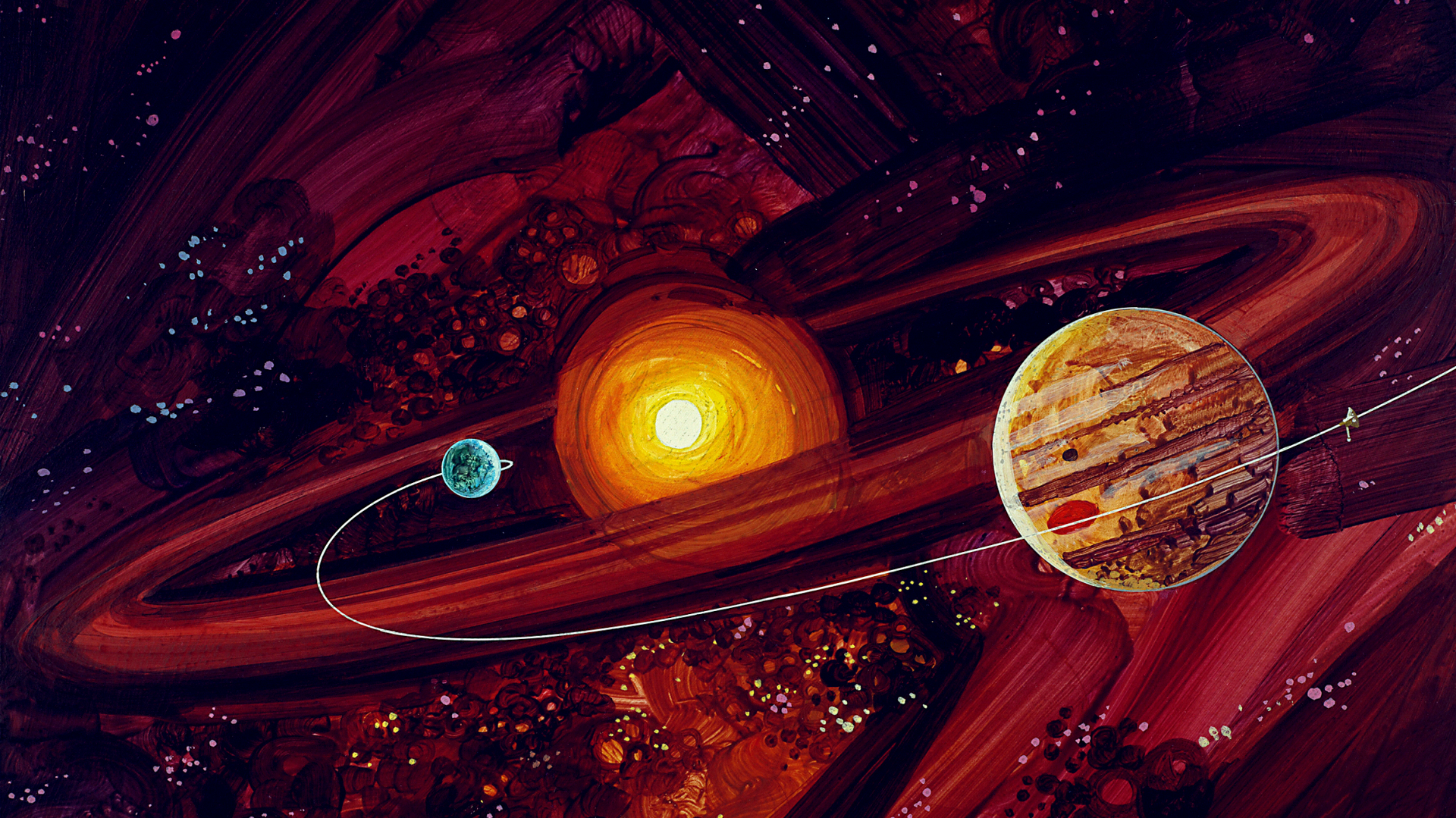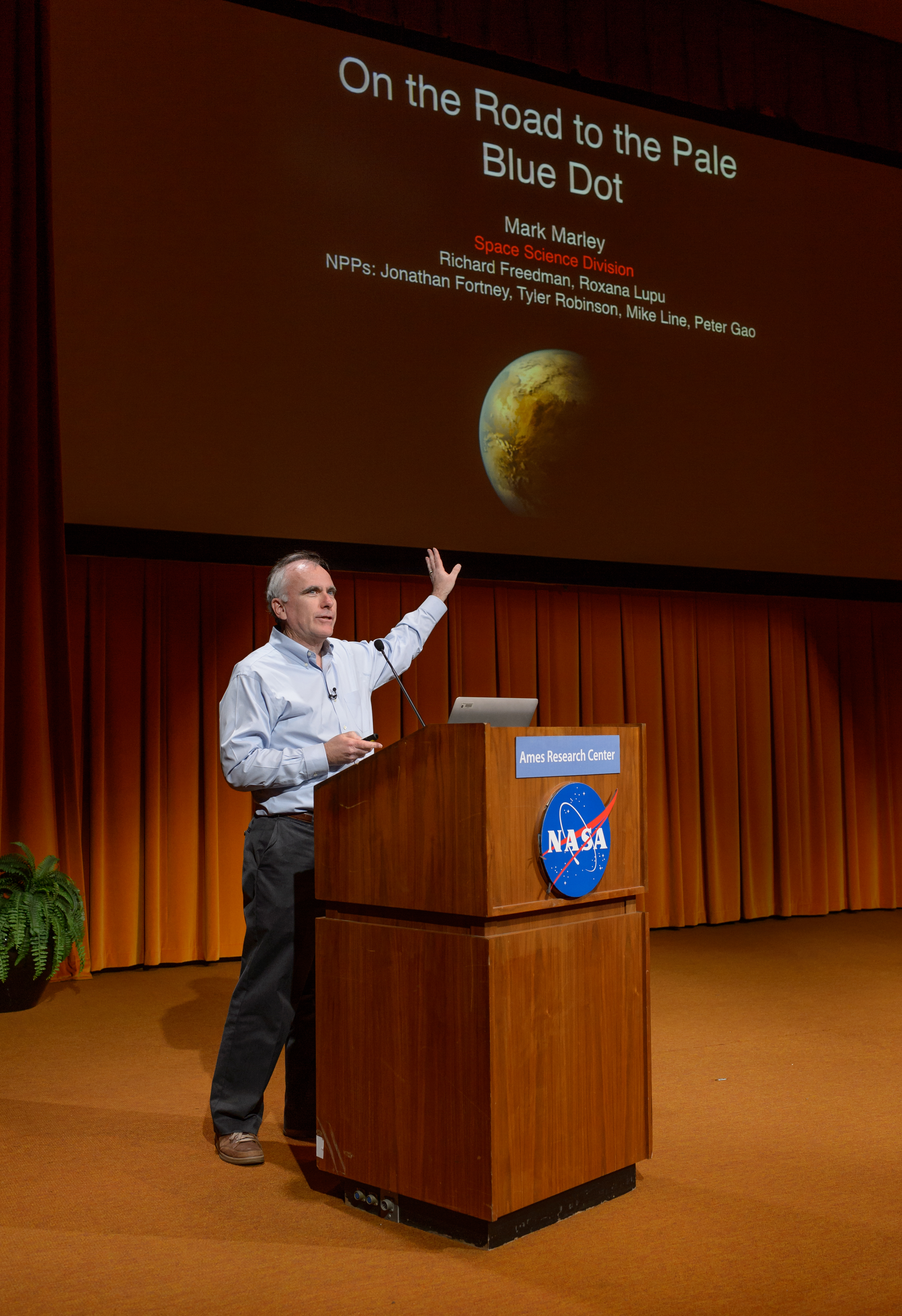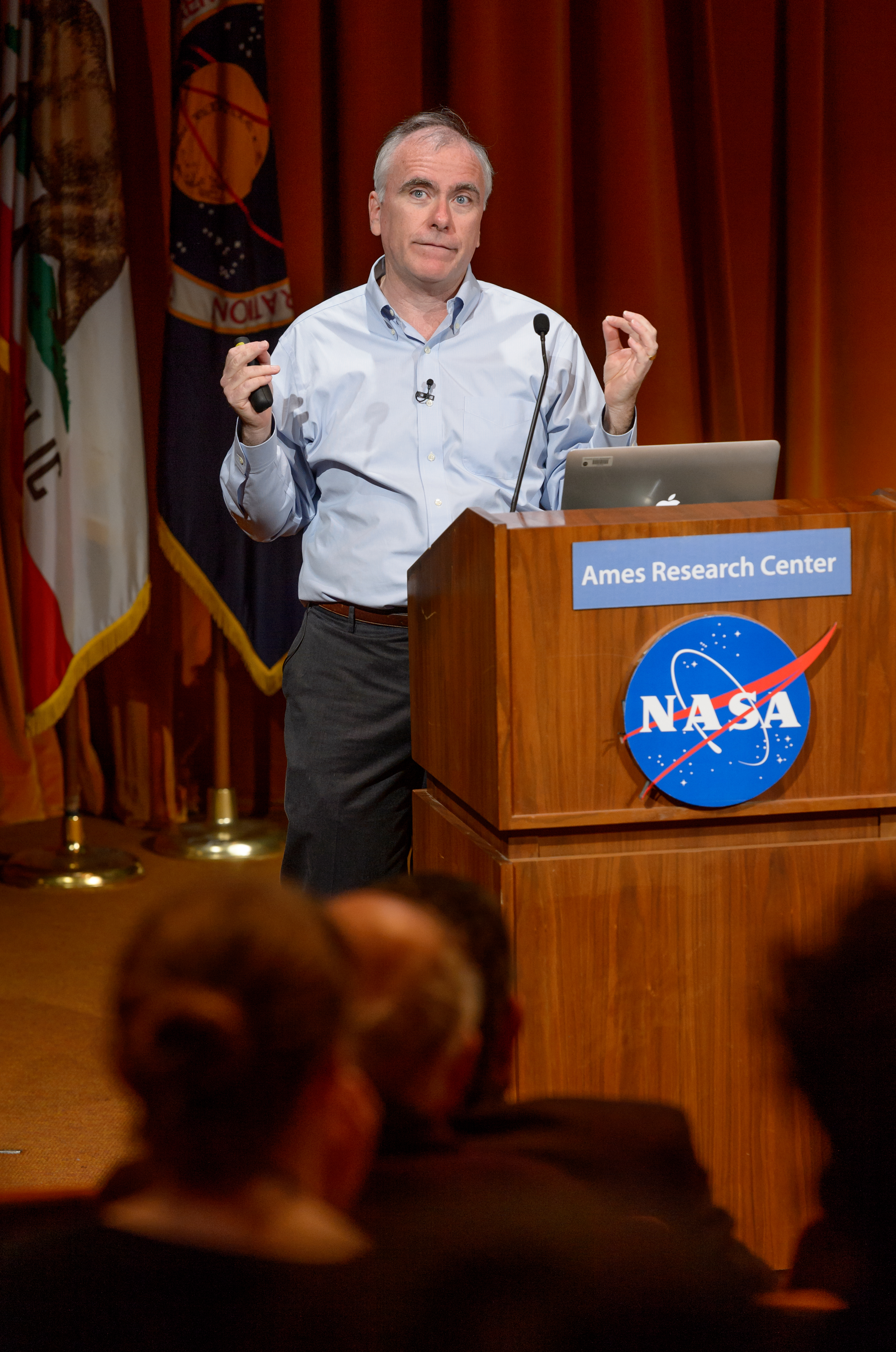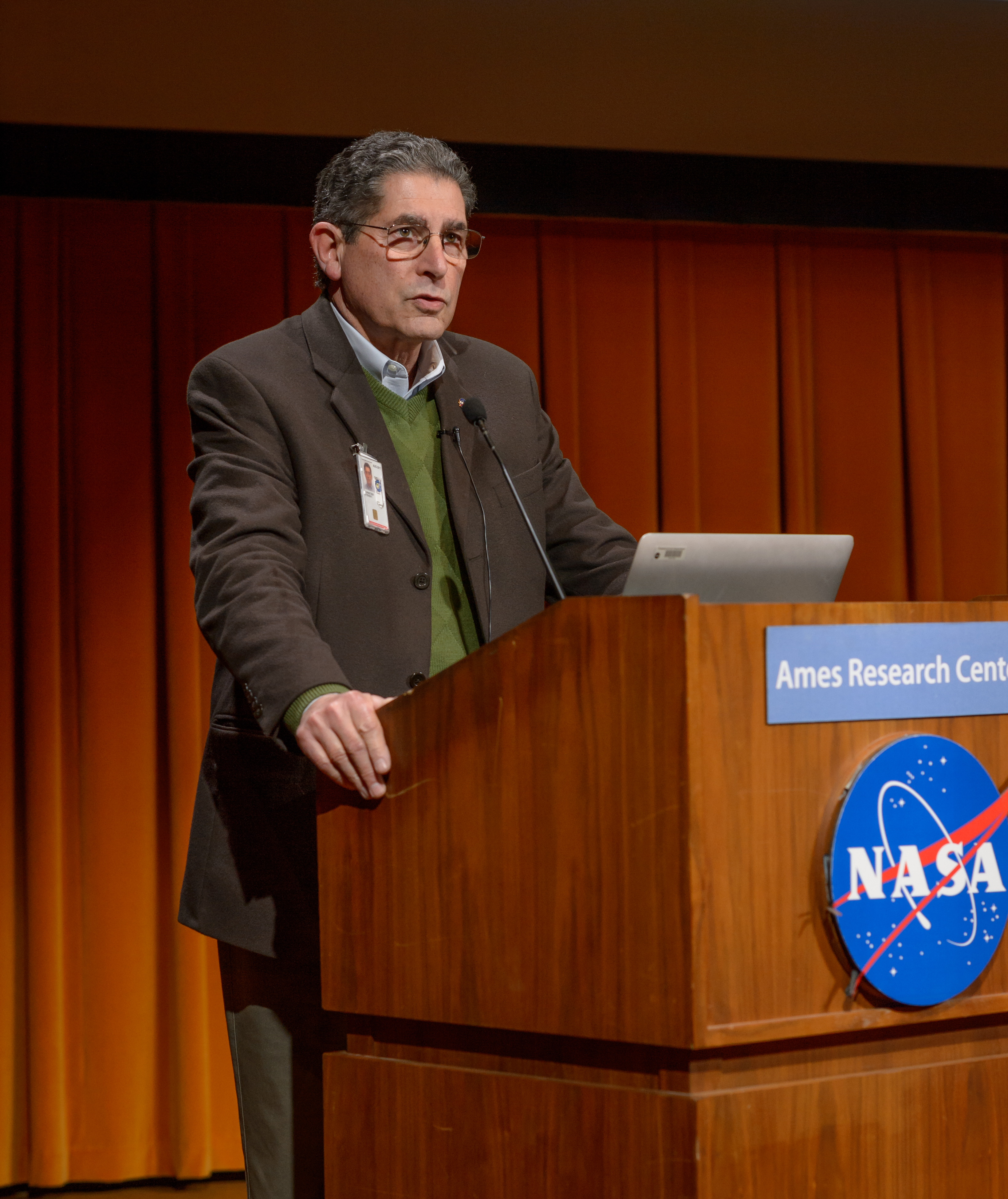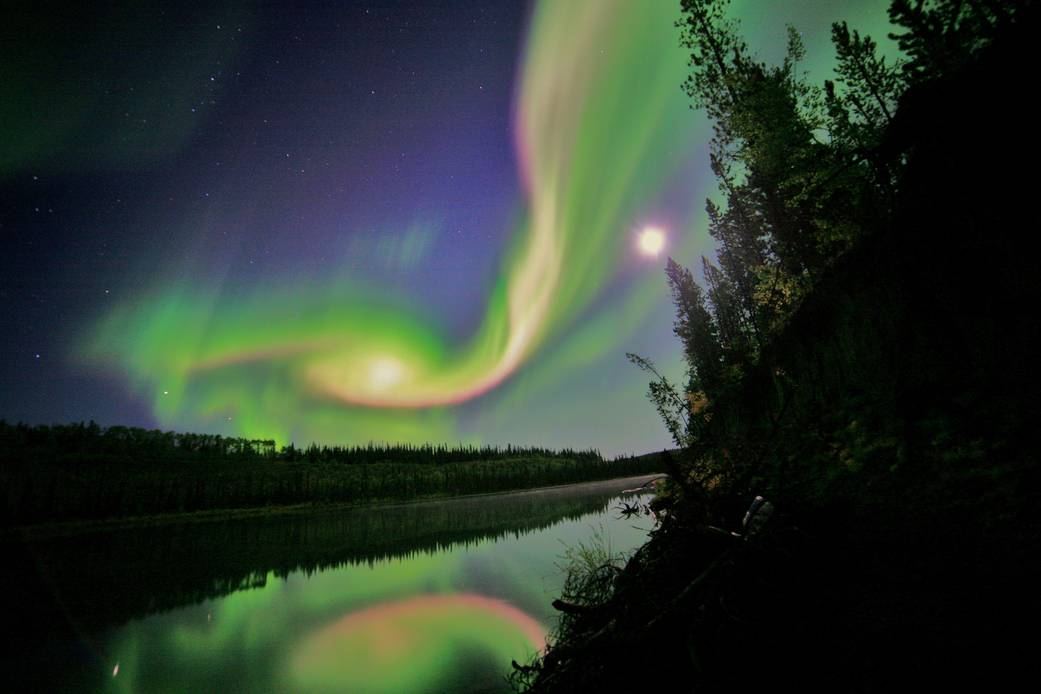2016 Ames Associate Fellow Seminar by Mark Marley
On The Road to the Pale Blue Dot
Exploring the worlds beyond our solar system may help us answer the age-old question: Are we alone? NASA Ames Research Center has played a key role in the discovery and mapping of thousands of exoplanets in our galaxy. Dr. Mark Marley talks about the direct-imaging method for exoplanet discovery and characterization.
The Ames Associate Fellow is an honorary designation to recognize exceptional scientific or engineering research by Ames staff members. Dr. Mark Marley is an expert in the field of atmospheric science theory and modeling. He is recognized, in part, for his work on the interiors of solar system gas giants and the dynamic atmospheres of brown dwarf stars.
Abstract:
Twenty years after the discovery of extrasolar planets we now know of thousands of new worlds. Almost all of these planets were discovered by indirect means, primarily transit and radial velocity observations. In the next two decades, however, NASA aims to launch space based telescopes with the means to directly image Earth sized and larger planets around nearby stars. The advantage of such methods is that, unlike transit methods, the light from the planet is measured separately from that of the star, allowing in depth characterization of the planetary atmosphere and perhaps surface.
In his talk, Dr. Marley will briefly review the progress of exoplanet discovery and characterization, focusing on direct imaging methods. He will explain the methods for characterizing directly imaged planets and highlight the successes from ongoing efforts to discover young giant planets from ground based telescopes. These initial studies are key to testing and developing the instrumental and theoretical approaches that will ultimately be needed to discover and characterize habitable planets and survey them for signs of life.
Biography:
Mark Marley is a Research Scientist at NASA’s Ames Research Center. He specializes in the study of the atmospheres of giant planets and brown dwarfs and has published over 170 refereed papers in these fields. He received his B.S. from Caltech and his Ph.D. from the University of Arizona, both in Planetary Science. After a Postdoctoral Fellowship at Ames he took up a faculty position in 1993 and then returned as a civil servant in 2000. He has served on multiple committees charged with advising NASA on the design requirements for future exoplanet imaging space telescopes, including the WFIRST (now in Phase A) and LUVOIR space telescopes. He has twice been awarded the NASA Medal for Exceptional Scientific Achievement.

























